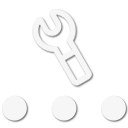
Contributor II
I have been looking into icon suspensions. I was contemplating a stage 6 as that final part to my FJ Cruiser build. Then I saw a video that talked about your suspension not being as important as your tent and how overland vehicles usually dont need a crazy suspension because you arent crawling. I added at least 1000lbs to my truck. Bumpers, winch, roof top tent, custom cabinets, dual battery set up, jack, traction boards.etc etc etc.
Should I still go with an Icon set up? I left $5k in my budget. Is there a better use for that money? I am new to all of this and have never been a "car guy", so I am looking for sound advice. Thanks.
Should I still go with an Icon set up? I left $5k in my budget. Is there a better use for that money? I am new to all of this and have never been a "car guy", so I am looking for sound advice. Thanks.








